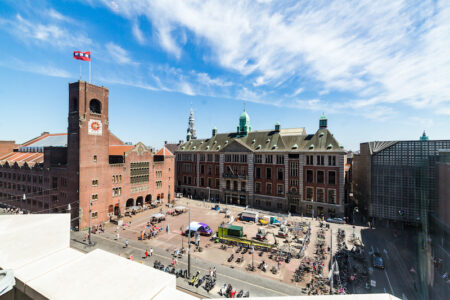3D printing: fad or future?

From 19-20 September, ZDS (The Central College of the German Confectionery Industry) held the International Congress for Additive Manufacturing and 3D Food Printing for the Confectionery and Snack Industry, at the Academy of Sweets in Solingen, Germany.
Key topics explored by a host of international speakers included additive manufacturing/3D printing potentials for food machine construction, potentials for product development of foods and 3D food printing opportunities for the production of sweets and snacks.
3D food printing is a relatively new form of technology which deposits paste or powder extruded materials layer by layer to build up a final edible product. While most speakers at the congress stated that the phenomenon caught the attention of food manufacturers from around 2013 onwards, Professor Hod Lipson of Columbia University cited that the first ever 3D printer was actually invented in 1983.
During his presentation, he went on to clarify that the reason for the recent mainstream awareness of the technology is owing to two key factors. Firstly, the prices of the machines have dropped significantly. While they were once available for $10,000-20,000, many 3D printers are now sold for around $1,000 and so have become much more accessible to a wider target group. “The high prices meant narrow markets, narrow markets meant high prices and this vicious cycle kept the technology out of reach for most people,” Lipson said.
Secondly, he stated that the range of materials able to be 3D printed has now expanded from solely plastic, which was significantly limiting the use of the technology. In the last few years, it has become possible to 3D print chocolate, cake mixes and cookie dough. “The range of materials has expanded dramatically, bringing in a host of new opportunities,” he added.
Yet while Lipson was a clear advocate for 3D food printing, throughout the congress speakers collectively questioned whether 3D printing is the future of confectionery production or merely a passing gimmick targeted towards millennials.
Uncertainty is rife
Gunther Bigl, managing director at Formicum 3D Service, detailed the company’s 3D printing trials of chocolate moulds during his presentation. However, he also stated that the printing is in an experimental stage and far from being able to produce a polished final result. Bigl highlighted his views on 3D confectionery printing being ideal for producing niche products exchangeable between friends, with less benefit as a profit-based tool for food manufacturers.
Indeed, Mirko Meboldt, Professor at ETH Zurich, reiterated Bigl’s sentiments when he highlighted research carried out by the university which showed that some five per cent of businesses believe 3D printing or additive manufacturing is beneficial, while around 33 per cent are not so keen. Businesses are scared to incur losses because of the technology, and it’s a technology that younger generations will have a much firmer grasp of, he noted.
Pasi Puukko, research team leader for advanced manufacturing technologies at VTT Technical Research Centre of Finland, said one of the reasons why consumers may be deterred by 3D food printing could relate to the increasing popularity of non-processed foods. People assume that 3D printed food is heavily processed and so it could result in a lack of interest in products produced via the technological equipment, he said. Furthermore, while detailing his trials in 3D printing, Puukko stated that one of the biggest problems with 3D printing is avoiding the material spreading during the heating stage. This was also mentioned by Lipson who said, “to make something that holds its shape very accurately has been a challenge for anybody working with 3D printing,” when commenting on 3D cookie printing trials conducted by Brandon Bowman of the University of Washington.
Advocating new methods
On the other hand, there were also a number of supporters of 3D confectionery printing at the congress. Dr Werner Koch, manager at 3D-Netzwerk.rw, which claims to be Germany’s strongest user network for 3D technologies, listed various advantages of 3D printing, which included the ability to develop a range of new products, decreased time for production and reduced overall costs with ongoing advancements in 3D printing technology. He also made reference to Sony Xperia currently developing a function in which its phones will be capable of scanning a user’s face and then translating that scan into a 3D printed chocolate design.
Puukko stated additional benefits of 3D food printing: it can facilitate customisation, offer more control over nutrition, flavour, colour, on-demand and on-the-go production and flexibility for new product designs. Dr Kjeld van Bommel, senior consultant at TNO, also noted how the organisation is making use of 3D printing in order to produce pasta for Italian food company Barilla. One piece made of a water and semolina flour mix takes 13 seconds to produce, he said. And Hagen Tschorn from Canto Ing displayed a range of colourful lollipops produced through 3D printing, illustrating the active interest of multiple confectioners in the technology.
However, the company renowned for its 3D confectionery printing at the congress was Katjes Magic Candy Factory. Managing director and founder Melissa Snover noted that the brand has been incorporating 3D printing into its production line since 2014. “Making 100,000 of the same thing is good for profit margin and good for value for the consumer, but it’s very bad for uniqueness and it’s very bad for customisation. So, this is the main reason why the 3D printer came to life,” she explained.
Snover went on to add that a possible reason for the lack of mainstream interest in 3D confectionery printing could be related to the technology itself. “In order to use a 3D printer effectively you need to understand Computer Aided Design (CAD), slicing, coding and material behaviour,” she noted, adding that few people are willing to do that.
Katjes Magic Candy Factory is well-known for its Sweet Selfies, which involves a consumer’s selfie – either pre-existing from social media or taken in a photo booth – printed onto candy or chocolate within five minutes. Snover explained, “We make whatever the customer wants and they mostly want to make their face and their name which is 2.5D. So, the mainstream consumer doesn’t think about it as a 3D printer, they think about it as a personalisation device.
“We are the only ones in the market that are live infront of consumers that allow them to design, make and take away [their customised product] in a consumer retail environment.”
Snover mentioned in her presentation the fact that “we [consumers] had smartphones for seven years before they became mainstream,” while Lipson drew reference to the way in which consumers were originally sceptical about coffee machines before they became staple household items, so perhaps 3D food printers can be considered in the same vein.
Leading food producers such as TNO Netherlands, Barilla and Katjes Magic Candy Factory are noticeably embracing the technology and taking advantage of the mass market potential of 3D food printing, so surely, it’s only a matter of time before other brands follow suit. The technology is still in its preliminary stages for now but it’s definitely one to keep an eye on, who knows, in 10-15 years’ time we may all have a 3D food printer sitting next to our coffee machines.



